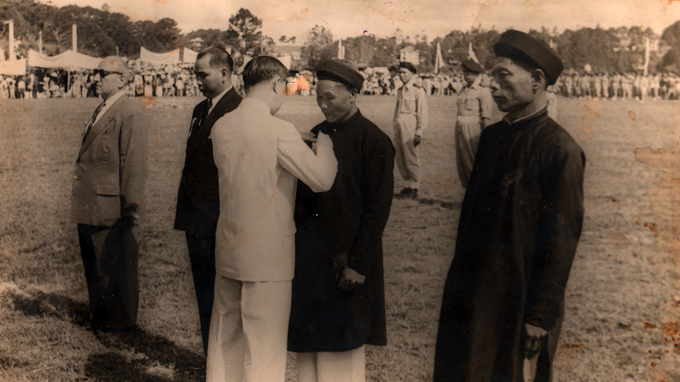A batch of highly skilled flower and vegetable farmers from the north of Vietnam migrated to Da Lat in the Central Highlands province of Lam Dong, where they braved poor conditions to turn the once desolate land into a “city of thousands of flowers”.
According to archives at Da Lat’s Ha Dong flower village Commemorative House, back in the 1930s, as more French soldiers were brought to Da Lat to have their injuries treated, local demand for fresh vegetables surged remarkably. However, there were no vegetable farms in Da Lat at that time, with most of the French troops’ fresh produce brought down from Hanoi.
Tran Van Ly, Chief of Lam Dong province, then considered developing flower and vegetable farming in Da Lat. Quite knowledgeable about France, he saw no reason not to implement the idea, as France and Da Lat have noted similarities in weather and soil.
Ly then sought help from Hoang Trong Phu, Chief of northern Ha Dong province, which was home to famous flower villages.
The story of an insider
The first migrant farmers, who came from six well-known flower villages surrounding Hanoi’s iconic Tay Lake, set up what is now Ha Dong flower village.
Ngo Van Ngon, who remains fit at the age of 86, is the only surviving member of the group. He vividly remembers one morning in May of 1938, when he was only 12. That morning, 35 experienced male farmers from Ngoc Ha, Nghi Tam, Tay Tuu, Quang Ba, Xuan Tao, and Van Phuc set off for Da Lat.
The men and their families parted in tears, as back then few had heard of Da Lat, which was discovered in 1893 by Swiss-French doctor- bacteriologist Alexandre Yersin.
They were also concerned about the land, as they knew it was quite cold in Da Lat all year round, with the temperature dropping as low as -5 Celsius.
Ngo Van At, Ngon’s father, didn’t dare to take his family with him. The family reunited in Da Lat one year later.
One year before leaving for Da Lat, the 35 men had received rigorous training and testing. Ngon still vividly remembers the province chief’s encouraging words to his father and the other men that if the project worked out, the group would create something valuable in a new land.
Ngon recalls that the pioneers and their families had a very tough time due to the cold and constant threat of wild animals. At the 64-hectare village, by day the men would work on the fields and never let their guard down, aware of lurking predators. At night, no one dared to venture away from the safety of their homes. Ngon recalls that he once chased away a big leopard with a trident.
Unacquainted with the cold weather, the people suffered constant ailments. The only reason they refused to return to their hometown in the north was that quitting the project would hurt their pride and esteem.
However, what daunted them the most was the mass death of their plants. They had brought with them a whole train car of French seedlings of potatoes, cauliflower, strawberries, and cabbages, as well as roses, daisies, and jasmine. After two years of failed crops, they almost ran out of seedlings while provisions from Hanoi were also petering out.
Ngon’s family met with the other villagers and they all decided to take a chance on the remaining seedlings and change their old farming habits. Instead of watering the plants in the early morning to wash away the frost on the leaves and stems, they lit fires to provide warmth to the plants all night long and only watered them later in the morning.
The trick worked and lush flower and vegetables farms formed all over Ha Dong village by late 1940, two years after the group had first arrived in Da Lat.
The village’s vegetable and flower business has since thrived. French people spread the high-quality produce across the country and to other Indochinese countries. Every year the villagers sent a reliable man to Hanoi to bring back a train car of French-origin vegetable and flower seedlings.
The pioneering farmers’ success served as a foundation for new groups of migrants, who then expanded the farming area and improved on farming skills. From the 1940s, agriculture grew to become Da Lat’s main economic strength.
The resounding success brought the Ha Dong villagers great honor. In 1945, 16 villagers with the most significant contributions were conferred prestigious titles by King Bao Dai, the last king of Vietnam and the Nguyen dynasty (1802-1945). Among them, Ngo Van At, Ngon’s father, was lauded for devising and piloting a method to grow vegetables and flowers in frosty weather.
| Da Lat City has held five Dalat Flower Festivals, which draw hordes of tourists from across the country and the world. This year’s festival, which closed on Dec 31, featured a large number of gorgeous flowers and produce as well as a host of fascinating art performances. The one-week event drew some 200,000 tourists to the resort city. |






















































